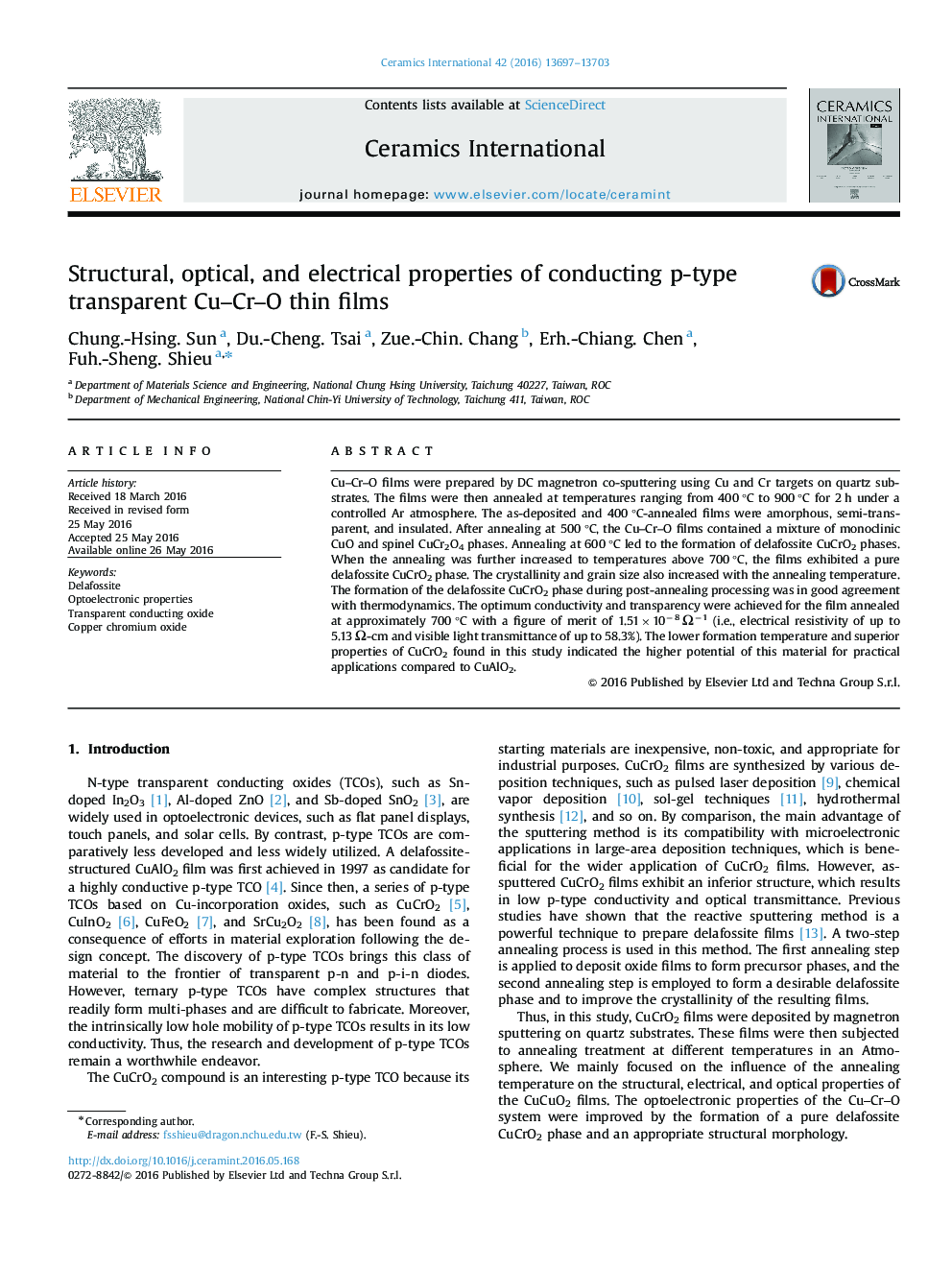| Article ID | Journal | Published Year | Pages | File Type |
|---|---|---|---|---|
| 1458531 | Ceramics International | 2016 | 7 Pages |
Cu–Cr–O films were prepared by DC magnetron co-sputtering using Cu and Cr targets on quartz substrates. The films were then annealed at temperatures ranging from 400 °C to 900 °C for 2 h under a controlled Ar atmosphere. The as-deposited and 400 °C-annealed films were amorphous, semi-transparent, and insulated. After annealing at 500 °C, the Cu–Cr–O films contained a mixture of monoclinic CuO and spinel CuCr2O4 phases. Annealing at 600 °C led to the formation of delafossite CuCrO2 phases. When the annealing was further increased to temperatures above 700 °C, the films exhibited a pure delafossite CuCrO2 phase. The crystallinity and grain size also increased with the annealing temperature. The formation of the delafossite CuCrO2 phase during post-annealing processing was in good agreement with thermodynamics. The optimum conductivity and transparency were achieved for the film annealed at approximately 700 °C with a figure of merit of 1.51×10−8 Ω−1 (i.e., electrical resistivity of up to 5.13 Ω-cm and visible light transmittance of up to 58.3%). The lower formation temperature and superior properties of CuCrO2 found in this study indicated the higher potential of this material for practical applications compared to CuAlO2.
